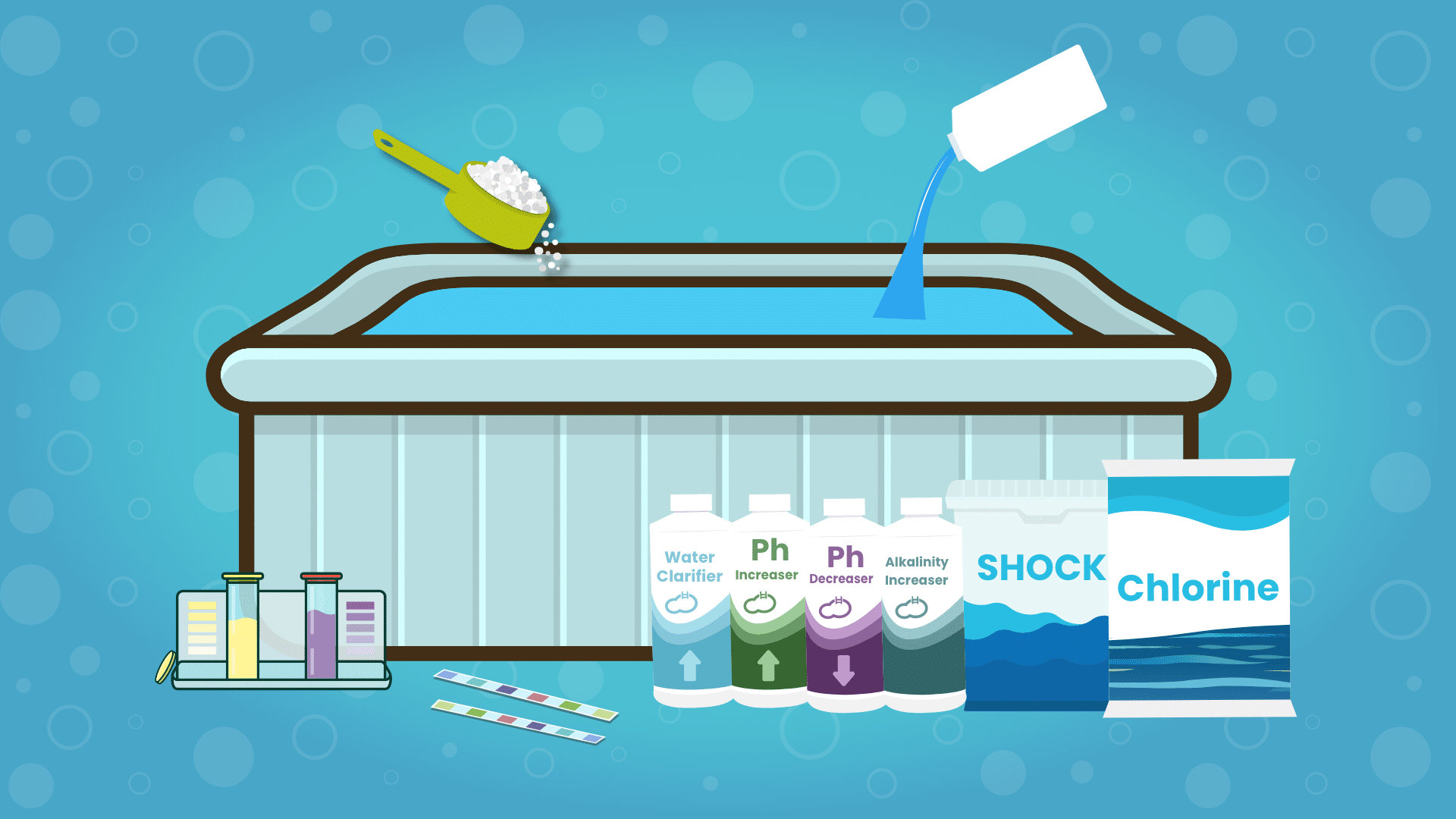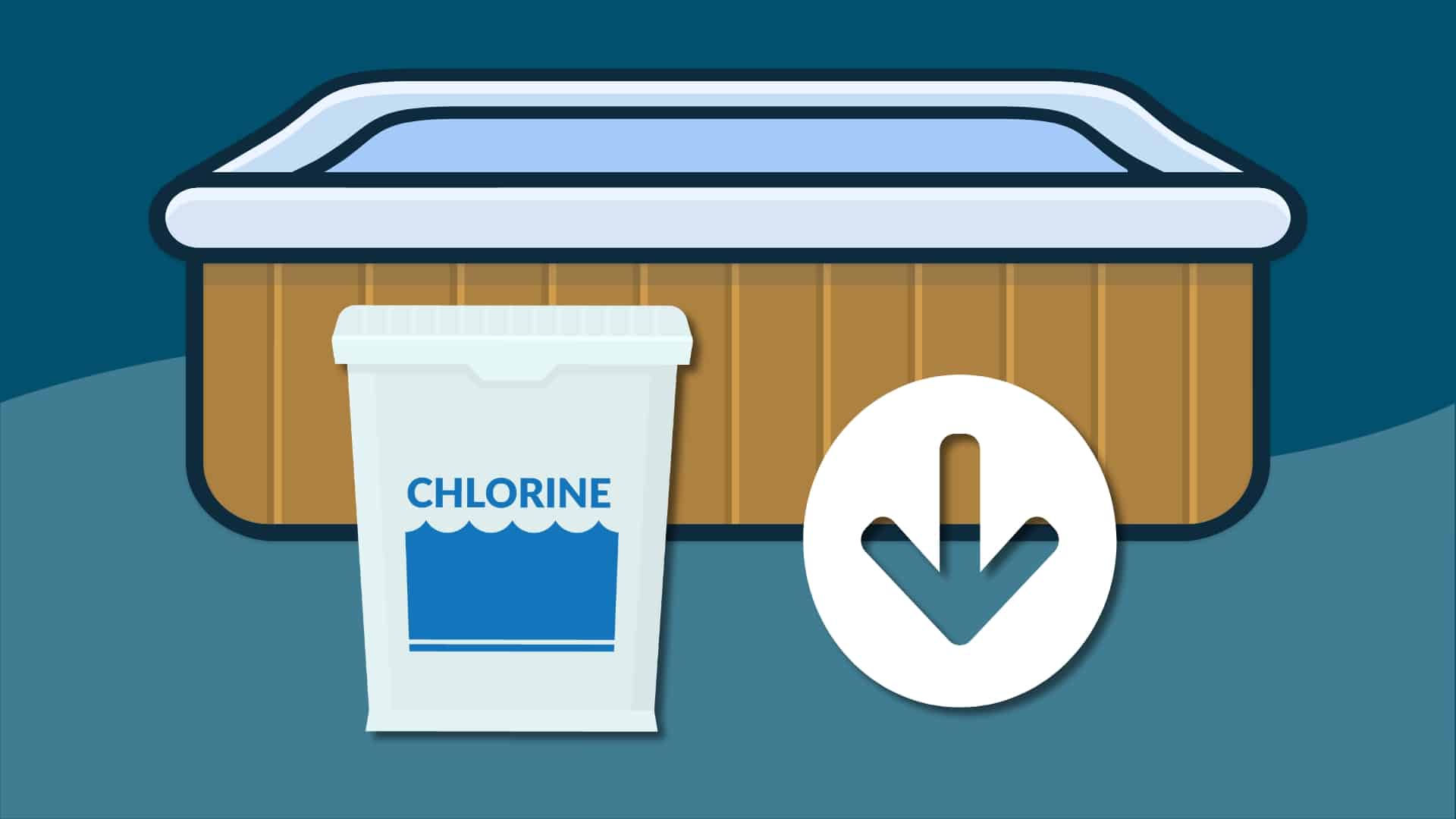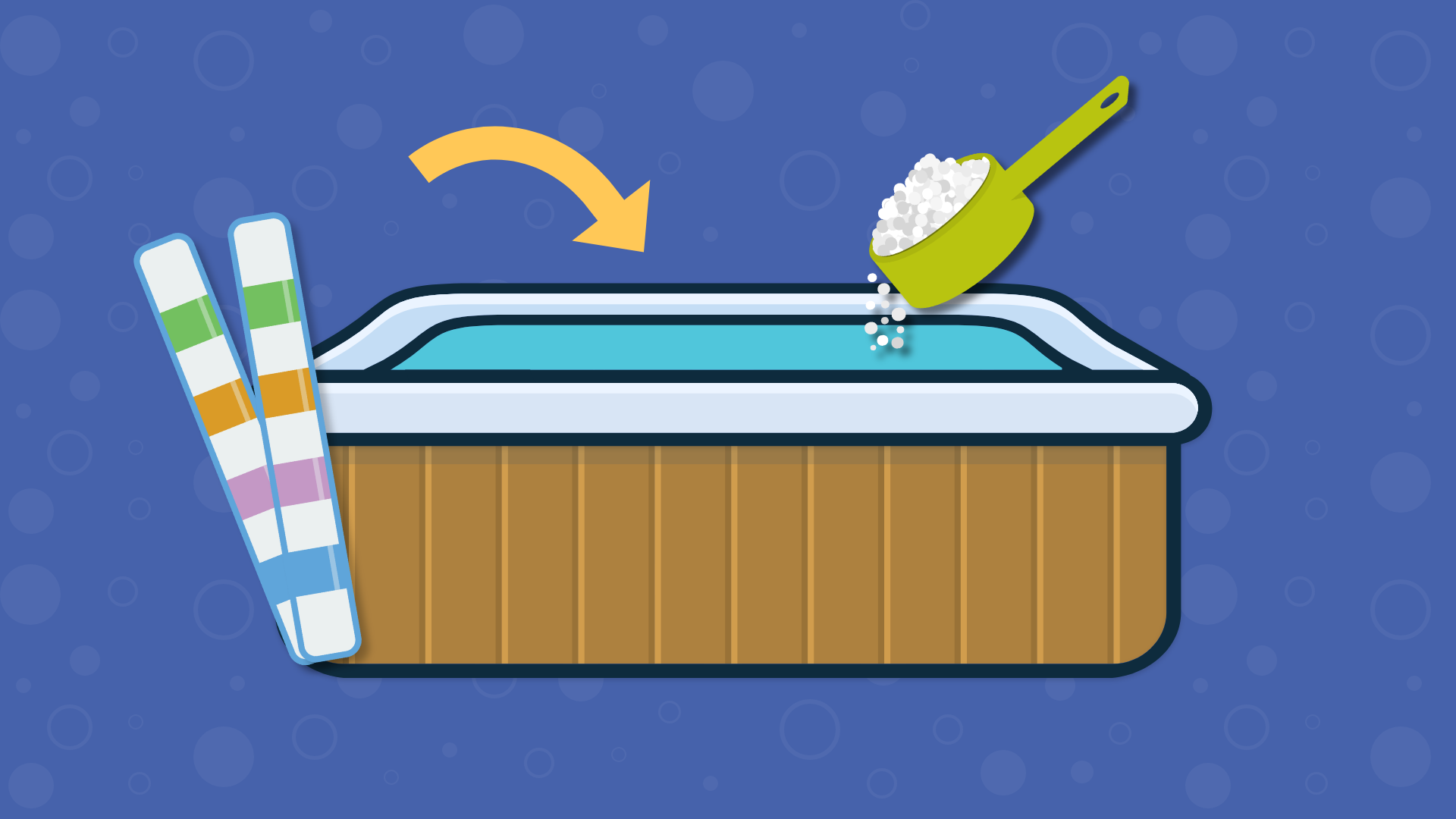Hot Tub Cyanuric Acid (Stabilizer): Do You Need It?
No. Cyanuric acid (also known as CYA or chlorine stabilizer) is not necessary in a hot tub. In fact, it can actually cause more harm than good. But it’s hard to avoid if you use chlorine.
If you use bromine, as a hot tub owner, you don’t have to worry about this problem.
In the rest of the article, you will learn about the potential risks and disadvantages of CYA in your hot tub. And how to deal with it.
Learn how to keep your hot tub clear while saving money so you can enjoy more soaking time without big costs. The Hot Tub Handbook covers every type of hot tub on earth.
What is Hot Tub Cyanuric Acid (CYA)?
Cyanuric Acid is a chemical commonly used in swimming pools to prevent the loss of chlorine. It helps to prevent the breakdown of chlorine in water due to the sun’s UV rays. This can help to reduce the amount of chlorine needed to maintain proper sanitation levels. If you’re a pool owner, check out our guide on CYA for pools here.
But what about your hot tub? Is it indoors or outdoors? And does that even matter?
When you add daily chlorine additions in granules, powdered form, or tablets (dichlor or trichlor) to your hot tub, it usually contains a small amount of CYA. This will cause CYA buildup over time and it’s by design. It’s called “stabilized chlorine” to protect the chlorine level from being used up by the sun.
But most hot tubs are usually not in direct sunlight all day, like a swimming pool. They are either covered with a hot tub cover or enclosure. So, technically, you really don’t need active chlorine with cyanuric acid.
However, the only way to avoid adding it to your tub is to use a different form of unstabilized chlorine like liquid chlorine (bleach, a.k.a. sodium hypochlorite) or pool shock (commonly calcium hypochlorite or lithium hypochlorite).
But I don’t recommend adding sodium or calcium hypochlorite to your hot tub water. There are better options designed for hot tubs later in this article. 👇
What is the Right Cyanuric Acid Level For a Hot Tub?
The ideal range for a hot tub is between 30 and 50 parts per million (ppm).
If the CYA levels become too high, it can lead to a condition known as “chlorine lock,” where the chlorine becomes less effective at sanitizing the pool water.
On the other hand, if the CYA levels are too low, the chlorine can dissipate too quickly and result in the need for more frequent chlorine additions. But this isn’t usually a problem in hot tubs. So just make sure you keep an eye on your CYA levels so you don’t go above 50 ppm.
How To Measure Cyanuric Acid Levels in a Hot Tub (Water Testing)?
To measure the cyanuric acid levels in your hot tub, you can use test strips or a liquid test kit that can test for CYA. I recommend using test strips because they’re fast and easy. However, they’re not as accurate as a liquid test kit. But I rather be quick than spot on. We just need to be “close enough” when it comes to CYA.
The best way to test hot tub water is to take a sample in a clean plastic cup or glass. Let the sample come to room temperature. Dip the test strip, wait 15 seconds, and compare the color of the strip to the chart provided.
Your ideal levels:
- pH Level: 7.4 – 7.6
- Total Alkalinity Level: 100 – 150 ppm (80 ppm is okay too)
- Free Chlorine Level: 1 – 3 ppm (0.5 – 1 ppm for mineral sanitizers)
- CYA Level: 30 – 50 ppm
When using a test kit to measure cyanuric acid levels, it’s important to carefully follow the instructions provided, as well as to ensure that the test kit has not expired, as this can lead to inaccurate results.
Additionally, I recommend testing in the morning before the hot tub has been used, as this will provide the most accurate measurement of cyanuric acid levels.
Tests for 7 important chemistries in seconds: Total Hardness, Total Chlorine, Total Bromine, Free Chlorine, pH, Total Alkalinity, and Cyanuric Acid.
How to Lower Cyanuric Acid in a Hot Tub (3 Ways)
When cyanuric acid levels become too high, it can interfere with the chlorine’s ability to sanitize the hot tub water. This can lead to cloudy water and an increased risk of bacteria and algae growth. Here are some tips on how to lower cyanuric acid levels in your hot tub:
- Dilution (The Easy Way): This can be done by partially draining and refilling with fresh water. Be sure to test the water before and after dilution to ensure that the cyanuric acid levels have been lowered to the desired range.
- Use a CYA Reducer Product for Pools (The Fast Way): There are products available on the market specifically designed to lower the CYA level. These products work by breaking down the CYA molecules, allowing them to be filtered out of the water. Be sure to carefully follow the manufacturer’s instructions when using these products to ensure safe and effective results.
- Avoid Stabilized Chlorine Products (The Best Way). Switch to a non-stabilized chlorine alternative to prevent increased levels of cyanuric acid. I recommend using Frog @ease. It’s a popular choice among hot tub owners. It’s a self-regulating floating chlorine and mineral combo sanitizer with 0% CYA. It costs more than just adding chlorine and minerals yourself; it’s easy to use and replace. When the unit is empty, it flips upside down to let you know. This is great for Airbnb and vacation homes with hot tubs.
Easy, worry free water maintenance. Less odors. FROG @ease knows when more sanitizing power is needed and automatically delivers it. You sit back and relax until FROG @ease flips over, then it’s time to replace the SmartChlor.
Note: The CDC (Centers for Diease Control) recommends “not using cyanuric acid or chlorine products with cyanuric acid in hot tubs/spas.”
Frequently Asked Questions About Cyanuric Acid in a Hot Tub
Many hot tub owners have questions about cyanuric acid and how it affects their hot tub experience. Here are some frequently asked questions:
What happens if there is too much cyanuric acid in my hot tub?
If there is too much cyanuric acid in your hot tub, it can cause a condition known as “chlorine lock,” where the chlorine becomes ineffective at sanitizing the hot tub water. This can lead to cloudy water and an increased risk of bacteria and algae growth.
Is it safe to soak in a hot tub with high cyanuric acid?
When it causes “chlorine lock,” the chlorine becomes less effective. This can result in an increased risk of waterborne illnesses and infections for swimmers. In addition, excessive cyanuric acid can also cause skin and eye irritation (hot tub itch or hot tub rash), and respiratory issues.
How do I get rid of cyanuric acid in my hot tub?
The best way to lower CYA is to dilute the hot tub with fresh water. You can also use a CYA reducer (commonly found in the swimming pool industry) or use an unstabilized chlorine product like Frog @Ease (which you can find any your local hot tub retailer).
Does shock raise cyanuric acid?
No, shock does not raise cyanuric acid levels. Normally, shock is made with “unstabilized” chlorine. However, check your brand of shock. If the active ingredient is either dichlor or trichlor, it contains CYA. Otherwise, you’re good.
What Should You Do as a Hot Tub Owner?
Hot tub owners can rest easy knowing that cyanuric acid, or CYA, is not a requirement for their tub. In fact, it can be more trouble than it’s worth. Although it may be unavoidable if you use chlorine, those who opt for bromine can avoid the potential complications altogether.
So, if you’re looking to simplify your hot tub maintenance and avoid unnecessary risks, consider bromine as your sanitizing agent of choice.
3 Ways We Can Help With Your Hot Tub
- Hot Tub Cheat Sheets (Free): Easy-to-use guides to help you keep your hot tub water balanced and sanitized.
- The Hot Tub Handbook: An illustrated guide to DIY hot tub care, including water chemistry, maintenance, troubleshooting, and more.
- The Hot Tub Care Course. You’ll get step-by-step videos and a step-by-step downloadable guide with everything you need to know about hot tub maintenance.











